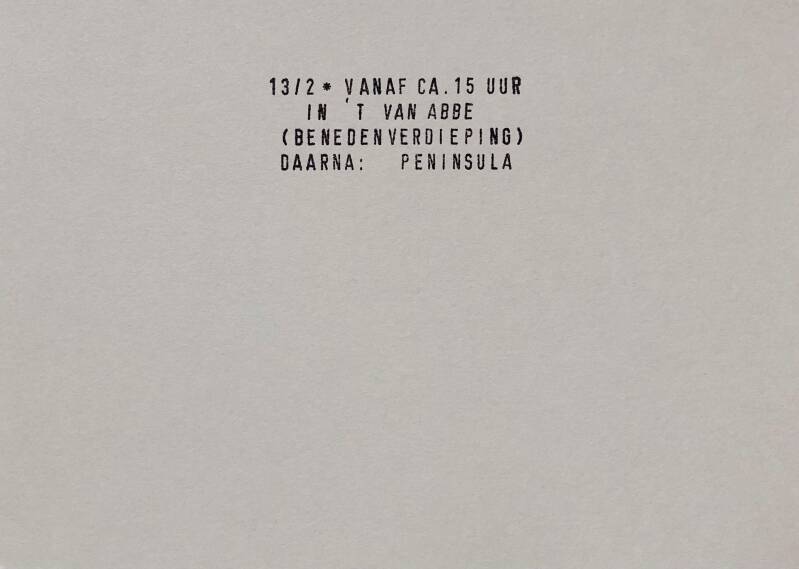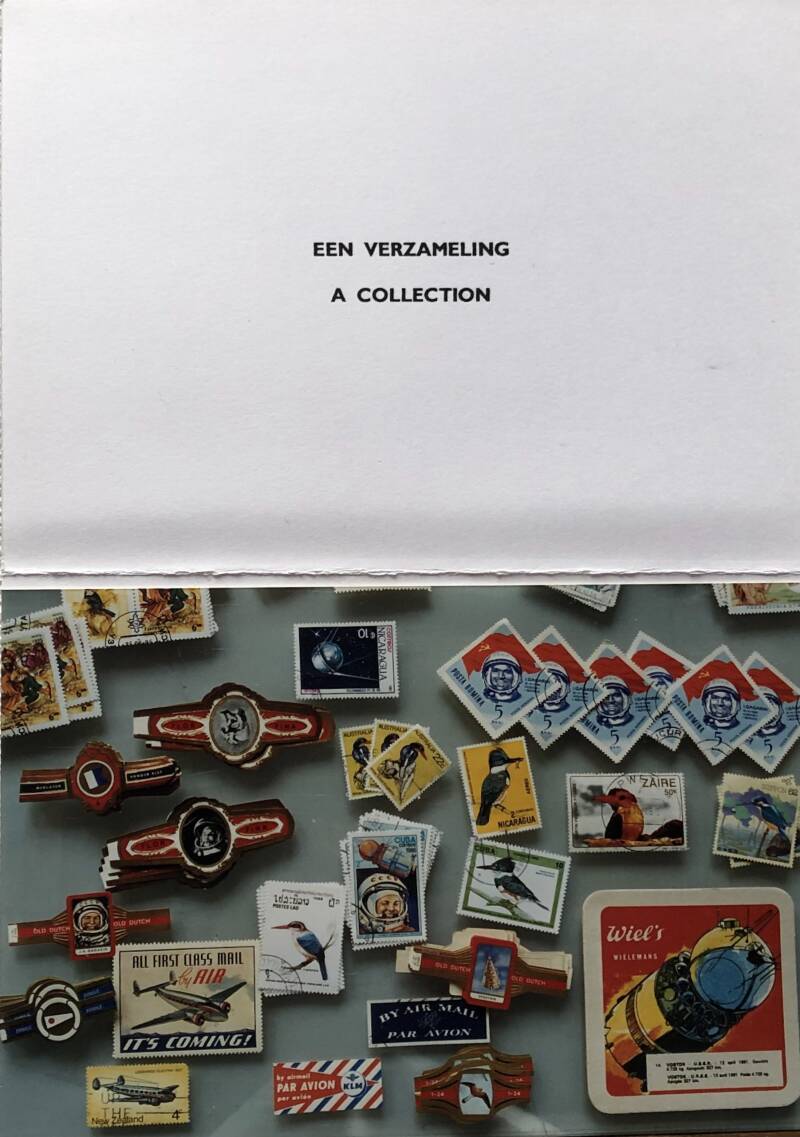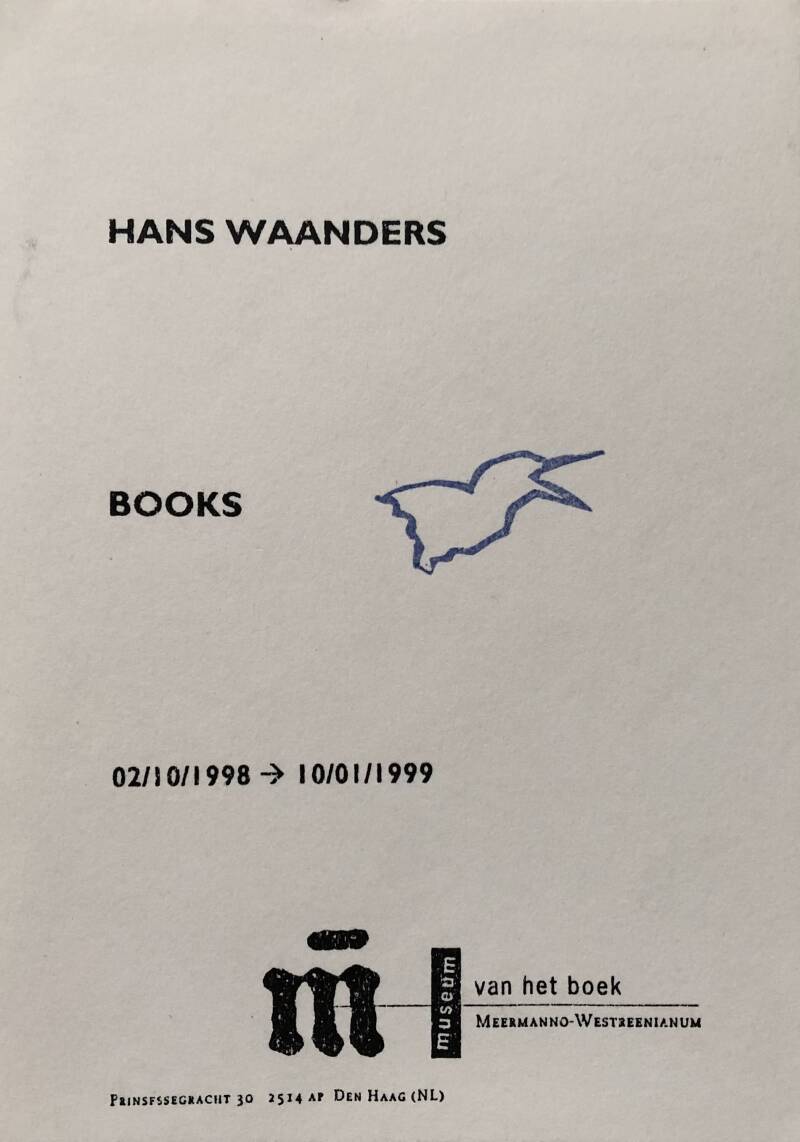Ephemera: (vouw)kaartjes
drie ijsvogels
Voor Hans Waanders staat de ijsvogel voor het leven - van de kunstenaar - op de rand van het bestaan, een symboliek die wellicht ook stamt van de oude legende van de vogel die nestelt opzee, en voor het vliegen. Hetgeen duidelijk wordt in een werk met de titel Drie IJsvogels, waarop een ijsvogel (alcedo atthis), een vliegtuig van het type Kingfisher (vought os-2u-1) en een ijsvogelvlinder (limenitis camilla) zijn gestempeld (bron: Tjeu Teeuwen, Alcedo Atthis, februari 1995).
IJsvogelsnavels, z.d.
Het werk getiteld Compass verwijst naar het oude geloof dat een dode ijsvogel als kompas zou dienen: de typische snavel wijst hier in stempelvorm naar de vier windstreken. Dit volksgeloof is vermoedelijk het overblijfsel van de klassieke mythe waarin Alcyone, de dochter van Aeolus, de God van de wind en gehuwd met Ceyx, de legendarische koning van Trachis, bericht krijgt van de verdrinkingsdood van haar man en zichzelf in zee werpt. Samen met Ceyx verandert ze in een ijsvogel en zij bouwen in de winter een nest op de golven van de Egeïsche zee, die daardoor kalm blijft (bron: Tjeu Teeuwen, Alcedo Atthis, februari 1995).
Halcyon, 1999, The two arm semophore code, 1999 en Kingfisher (code with hand flags), 1999 + divers
Naast de vele boeken produceerde Waanders talloze prentbriefkaarten, waarop hij zijn ideeën, invallen en associaties met betrekking tot de ijsvogel wereldkundig kan maken. Zoals de kaart met daarop veertien handjes uit het Alphabet der doofstommen die Martin Pescador zeggen, of de twee-armige semaphoren die Kingfisher klapwieken (bron: Tjeu Teeuwen, Alcedo Atthis, februari 1995).
Border - Perch, 1999
The cosmopolitan mobility of Waanders' bird might therfore be described as a freedom or flow that is also grounded. Such a paradox of flight and alighting finds salient expression in a key determinant of the kingfisher's territorial behavior: the perch. These strategic hunting stations in the form of twigs, branches, posts, exposed roots, and sedges are the stakes of a bird's hunting ground. And, as Waander's card Border - Perch (1999) suggets by evoking cartographic border lines, perches are also the markers of territory and a key resourcce its effort to survive and andure. Thus, where Atlas and Map of the world evoke the kingfisher's territorial bahaviour, Waanders'perch installations, as documented in Fishing Perches and Perches, incite it (bron: Ross Hair, Brilliant Absence, 2019)
De laatste voorjaarsdatum is 21 april 1955, toen nog een IJsvogel werd gezien op een paal in een poldervaart bij Lies, 1999
Lies depicts a location where someone other than Waanders had sighted a kingfisher perched on a pole somewhere along the Poldervaart canal, near Lies, on April 21st 1955. "Although the presence of a number of birds in the distance is indicated by small dots", Tjeu Teeuwen notes, "the image shows no kingfisher at all. Still you closely observed the bushes, hopefully study the stumps and poles" (bron: Ross Hair, Brilliant Absence, 2019).
Uitnodigingskaart Meermanno-Westreenianum, 1998-1999 (diverse uitvoeringen)











































